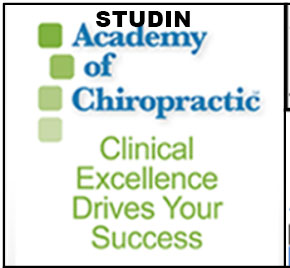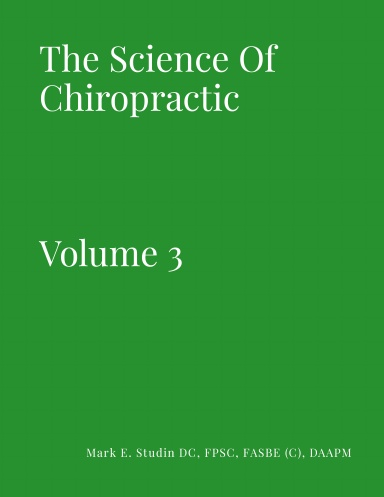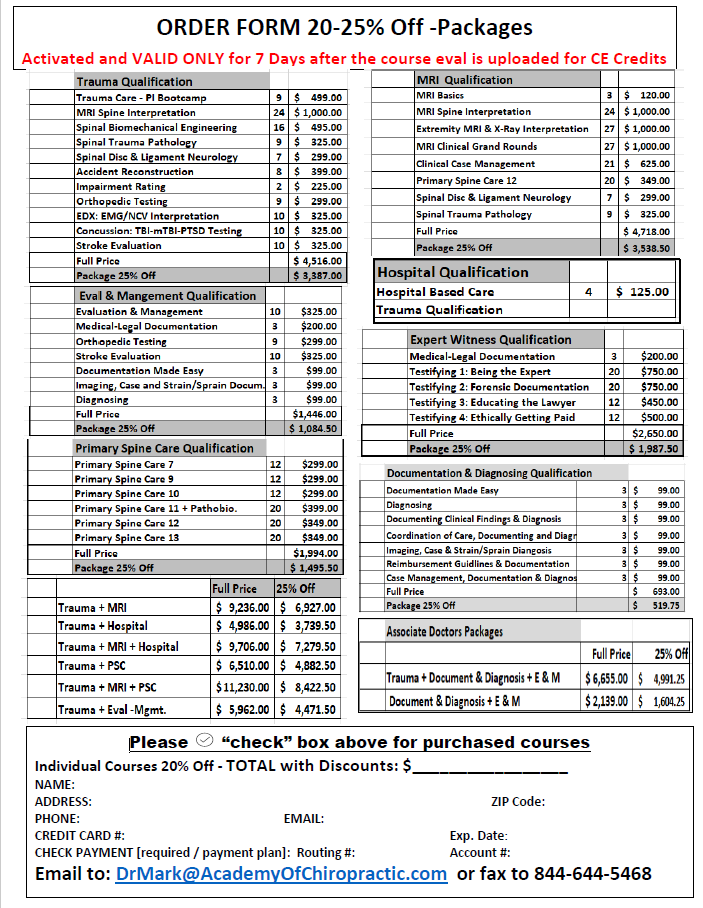MRI Spine Atlas
153 Pages
$161.25
Contents
Table of Contents…………………………………………………………………………………………………………………………. 2
Introduction ……………………………………………………………………………………………………………………………….. 7
About the Author…………………………………………………………………………………………………………………………. 8
Acknowledgments……………………………………………………………………………………………………………………….. 9
MRI Acquisition Protocols……………………………………………………………………………………………………………. 10
Cervical Spine Anatomy ………………………………………………………………………………………………………………. 11
……………………………………………………………………………………………………………………………………………….. 12
Lumbar Spine Anatomy……………………………………………………………………………………………………………….. 13
……………………………………………………………………………………………………………………………………………….. 14
Lumbar Inferior Extrusion ……………………………………………………………………………………………………………. 15
Central Herniation 1 …………………………………………………………………………………………………………………… 16
Central Herniation 2 …………………………………………………………………………………………………………………… 17
Central Herniation 3 …………………………………………………………………………………………………………………… 18
Cervical Central Herniation 4 ……………………………………………………………………………………………………….. 19
C5-C6 Broad-Based Herniation Effacing the Spinal Cord ……………………………………………………………………. 20
C4-C5 Superior Extrusion …………………………………………………………………………………………………………….. 21
……………………………………………………………………………………………………………………………………………….. 21
C4-C5 Herniation with Cord Compression/Displacement…………………………………………………………………… 22
C4-C5 Extrusion Invaginating the Cord …………………………………………………………………………………………… 23
Modic 1 Change and Schmorl’s Node (T1 Verified) …………………………………………………………………………… 24
Metastatic Hypertrophic Tumor……………………………………………………………………………………………………. 25
C5-C6 Herniation………………………………………………………………………………………………………………………… 26
C5-C6 Broad-Based Herniation……………………………………………………………………………………………………… 27
Cervical Thecal Sac Abutment/Effacement of Subarachnoid Space……………………………………………………… 28
L5-S1 Left Nerve Root Abutment…………………………………………………………………………………………………… 29
Left Paracentral Extrusion……………………………………………………………………………………………………………. 30
……………………………………………………………………………………………………………………………………………….. 30
Epidural Fat ………………………………………………………………………………………………………………………………. 31
Compression Fracture with Bone Edema and Cord Displacement……………………………………………………….. 32
Thecal Sac Compression………………………………………………………………………………………………………………. 33
Myelomalacia [Mottled] Cord vs. Cord Edema? ………………………………………………………………………………. 34
Cervical Cord Mass Effect and Abutment ……………………………………………………………………………………….. 35
……………………………………………………………………………………………………………………………………………….. 35
Cervical Cord Mass Effect and Compression C6-7 …………………………………………………………………………….. 36
L4-L5 Intranuclear Cleft……………………………………………………………………………………………………………….. 37
Cervical Cord Compression…………………………………………………………………………………………………………… 38
Lumbar Right Lateral Recess Extrusion with Neural Canal Compression ………………………………………………. 39
L5 Extrusion Compressing the Thecal Sac and Severely Stenosing the Left Neural Canal…………………………. 40
Central Herniation ……………………………………………………………………………………………………………………… 41
Lumbar Central Canal Tarlov/Root Sleeve Cyst………………………………………………………………………………… 42
L4-L5 Inferior Left Extrusion Abutting the Thecal Sac and Severe Left Neural Canal Stenosis …………………… 43
Schwannoma (Nerve Sheath Tumor) Benign Tumor …………………………………………………………………………. 44
L5-S1 Superior Varices Secondary to Disc Extrusion………………………………………………………………………….. 45
Anterior Disc Herniation ……………………………………………………………………………………………………………… 46
……………………………………………………………………………………………………………………………………………….. 46
Broad-Based Herniation with Cord Compression……………………………………………………………………………… 47
Lumbar Tarlov/Root Sleeve Cyst …………………………………………………………………………………………………… 48
Acute Schmorl’s Node with Modic 1 Changes (Confirmed on T1)………………………………………………………… 49
L5-S1 Inferior Extrusion……………………………………………………………………………………………………………….. 50
Fragment Posterior to S1 …………………………………………………………………………………………………………….. 51
Cervical Broad-Based Herniation…………………………………………………………………………………………………… 52
……………………………………………………………………………………………………………………………………………….. 52
Cervical Spinal Cavernoma…………………………………………………………………………………………………………… 53
C6-7 Inferior Extrusion with Cord Compression ……………………………………………………………………………….. 54
C5-C6 Severe Stenosis secondary to disc ridge osteophyte and ligament flavum hypertrophy…………………. 55
L5-S1 Superior Extrusion ……………………………………………………………………………………………………………… 56
C2 Odontoid Fracture………………………………………………………………………………………………………………….. 57
L2 Body Metastasis with Posterior Displacement of Vertebral Body……………………………………………………. 58
L5-S1 Thecal Sac Compression and Right Nerve Root Compression……………………………………………………… 59
……………………………………………………………………………………………………………………………………………….. 59
Cervical Uncinate Arthropathy (Hypertrophy)…………………………………………………………………………………. 60
……………………………………………………………………………………………………………………………………………….. 60
Lumbar Extrusion (Suspicious for Fragmentation) ……………………………………………………………………………. 61
Metastasis T1 Body vs. Hemangioma (STIR Required) ………………………………………………………………………. 62
……………………………………………………………………………………………………………………………………………….. 62
Cervical Syrinx or Syringohydromyelia …………………………………………………………………………………………… 63
……………………………………………………………………………………………………………………………………………….. 63
L5-S1 Nerve Root Compression …………………………………………………………………………………………………….. 64
L5-S1 Herniation in the Left Lateral Recess moderately stenosing the Neural Canal with Modic 1 Changes
indicating Acute Schmorl’s Node…………………………………………………………………………………………………… 65
C7-T1 Large Extrusion with a Mass Effect in the Left Lateral Recess Severely Stenosis the Left Neural Canal 66
L4-L5 Inferior Extrusion……………………………………………………………………………………………………………….. 67
L4-5 Superior Extrusion with Severe Varix………………………………………………………………………………………. 68
L4 Superior Endplate Fracture with Modic 1 Change ………………………………………………………………………… 69
L5 – S1 Inferior Extrusion …………………………………………………………………………………………………………….. 70
L4-L5 Annular Fissure………………………………………………………………………………………………………………….. 71
L4-L5 Central Herniation ……………………………………………………………………………………………………………… 72
C3-C4 Inferior Extrusion and congenital Fusion of C5-C6 …………………………………………………………………… 73
C5-C6 Inferior Extrusion ………………………………………………………………………………………………………………. 74
L3-L4 Modic Type 1 …………………………………………………………………………………………………………………….. 75
L3-L4 Modic Type 2 …………………………………………………………………………………………………………………….. 76
L3-L4 Modic Type 3 …………………………………………………………………………………………………………………….. 77
L5 – S1 Inferior Extrusion …………………………………………………………………………………………………………….. 78
L-Spine Multiple Nerve Root Compressions…………………………………………………………………………………….. 79
Lumbar Degenerative Spondylolysis ……………………………………………………………………………………………… 80
L2-L3 Large Focal Herniation Compressing the Thecal Sac …………………………………………………………………. 81
T11 – T12 Burst Hemangioma ………………………………………………………………………………………………………. 82
T5 – T6 Superior Extrusion with Cord Edema…………………………………………………………………………………… 83
Dilated Focal Central Canal ………………………………………………………………………………………………………….. 84
……………………………………………………………………………………………………………………………………………….. 84
L1 Burst Fracture………………………………………………………………………………………………………………………… 85
……………………………………………………………………………………………………………………………………………….. 85
L1 ……………………………………………………………………………………………………………………………………………. 85
L1 Burst Fracture………………………………………………………………………………………………………………………… 86
L4-L5 Bulge with Right L5 Root Sleeve Compressed with Acute Schmorl’s Node (STIR Confirmed)……………. 87
L4-L5 Psuedo-Disc and Spondylolesthesis with Thecal Sac Compression………………………………………………. 88
\ ……………………………………………………………………………………………………………………………………………… 88
L5-S1 Bulge Disc with Superimposed Herniation and Transitional S1 Vertebrate …………………………………… 89
……………………………………………………………………………………………………………………………………………….. 89
L2-L3 Right Extrusion ………………………………………………………………………………………………………………….. 90
……………………………………………………………………………………………………………………………………………….. 90
C6-C7 Broad-Based Herniation with Mass Effect of Cord …………………………………………………………………… 91
5
L4 Anterior Superior Fracture (Limbus) with Acute Schmorl’s Node…………………………………………………….. 92
Cervical Syrinx (Syringomyelia) …………………………………………………………………………………………………….. 93
Upper Thoracic Herniation…………………………………………………………………………………………………………… 94
L5-S1 Superior Extrusion Compressing the Thecal Sac ………………………………………………………………………. 95
C4-C5 Broad-Based Herniation Compressing the Cord………………………………………………………………………. 96
……………………………………………………………………………………………………………………………………………….. 96
……………………………………………………………………………………………………………………………………………….. 96
L4 Acute Schmorl’s Node with Modic 1 Change (STIR Confirmed)……………………………………………………….. 97
Thoracic Myxopapillary Ependymoma …………………………………………………………………………………………… 98
Lumbar Vacuum Disc ………………………………………………………………………………………………………………….. 99
L5-S1 Nerve Root Compression with L5 Pars Lysis and Hypertrophic Changes …………………………………….. 100
L3-L4 Lateral Recess/Proximal Neural Canal Extrusion ……………………………………………………………………. 101
C6-7 Broad-Based Herniation……………………………………………………………………………………………………… 102
C6-C7 Small Central Herniation …………………………………………………………………………………………………… 103
Lumbar Non-Diagnostic Slice………………………………………………………………………………………………………. 104
L5-S1 Herniated Disc with Large Epidural Fat Deposit……………………………………………………………………… 105
L2 Metastasis with Expansion …………………………………………………………………………………………………….. 106
L2-L3 Thecal Sac Compression…………………………………………………………………………………………………….. 107
L5-S1 Nerve Root Compression …………………………………………………………………………………………………… 108
L4-L5 Nerve Root Compression …………………………………………………………………………………………………… 109
Lumbar Chronic Compression Fracture with Anterior Wedging ………………………………………………………… 110
L2-L3 Disc Osteophyte Complex ………………………………………………………………………………………………….. 111
L5-S1 Inferior Extrusion……………………………………………………………………………………………………………… 112
L4-L5 Focal Herniation Superimposed on a Bulge …………………………………………………………………………… 113
C2-C3 Left-Sided Disc Osteophyte Complex and Bulge…………………………………………………………………….. 114
S1 Acute Schmorl’s Node with Modic 1 Changes (STIR Confirmed) ……………………………………………………. 115
L3 Hemangioma……………………………………………………………………………………………………………………….. 116
Cervical Schwannoma ……………………………………………………………………………………………………………….. 117
T7-T8 Right Lateral Herniation ……………………………………………………………………………………………………. 118
L1-L2 Discitis……………………………………………………………………………………………………………………………. 119
C5-C6 Far Right Disc Osteophyte with Severe Canal Stenosis and Mild Central Stenosis ……………………….. 120
L5-S1 Right Paracentral Herniation………………………………………………………………………………………………. 121
L4-L5 Central Herniation Superimposed on a Bulge Invaginating the Thecal Sac ………………………………….. 122
L2 and L3 Compression Fractures………………………………………………………………………………………………… 123
L3 Superior Endplate Post-Traumatic Schmorl’s Node …………………………………………………………………….. 124
L5-S1 Left Extrusion ………………………………………………………………………………………………………………….. 125
C4-C5 Osteophyte …………………………………………………………………………………………………………………….. 126
C5-C6 Central Herniation …………………………………………………………………………………………………………… 127
C6-C7 Annular Fissure -Central Herniation ……………………………………………………………………………………. 128
C5-C6 Disc Osteophyte Complex Compressing the Cord ………………………………………………………………….. 129
L4-L5 Synovial Cyst……………………………………………………………………………………………………………………. 130
C2 Destruction of Dens and Lateral Mass secondary to Rheumatoid Arthritis……………………………………… 131
T12 Acute Schmorl’s Node (STIR Confirmed) …………………………………………………………………………………. 132
L5-S1 Left Lateral Recess Extrusion………………………………………………………………………………………………. 133
C3-C4 Left Focal Herniation with Uncinate Hypertrophy………………………………………………………………….. 134
C4-C5 Central Herniation with Annular Fissure Indenting the Spinal Cord ………………………………………….. 135
C6-C7 Broad-Based Central Herniation Compressing Spinal Cord………………………………………………………. 136
C5-C6 Broad-Based Disc Osteophyte ……………………………………………………………………………………………. 137
C5-C6 Right Nerve Compression in the Neural Canal ………………………………………………………………………. 138
C6-C7 Hypertrophy Ligamentum Flava …………………………………………………………………………………………. 139
C6-C7 Central Herniation with an Annular Fissure ………………………………………………………………………….. 140
C3-C4 Central Herniation with Overlapping Endplate Due to Improperly Aligned Reference Line …………… 141
C4-C5 Broad-Based Herniation……………………………………………………………………………………………………. 142
T3-T4 Broad-Based Herniation ……………………………………………………………………………………………………. 143
C6-C7 Annular Fissure ……………………………………………………………………………………………………………….. 144
C1 Alar Ligament Edema ……………………………………………………………………………………………………………. 145
C5 Superior Endplate Fracture ……………………………………………………………………………………………………. 146
S1 Perineural Cyst…………………………………………………………………………………………………………………….. 147
L5 – S1 Metastasis Secondary to Melanoma………………………………………………………………………………….. 148
L3 Compression Fracture……………………………………………………………………………………………………………. 149
L2 Metastatic Pathologic Fracture……………………………………………………………………………………………….. 150
L2 Metastatic Pathologic Fracture CAT Scan [Same patient as previous chapter]…………………………………. 151
T12- L2 Myxopapillary Apendymoma…………………………………………………………………………………………… 152
Myelomalacia C4 -C6 ………………………………………………………………………………………………………………… 153



